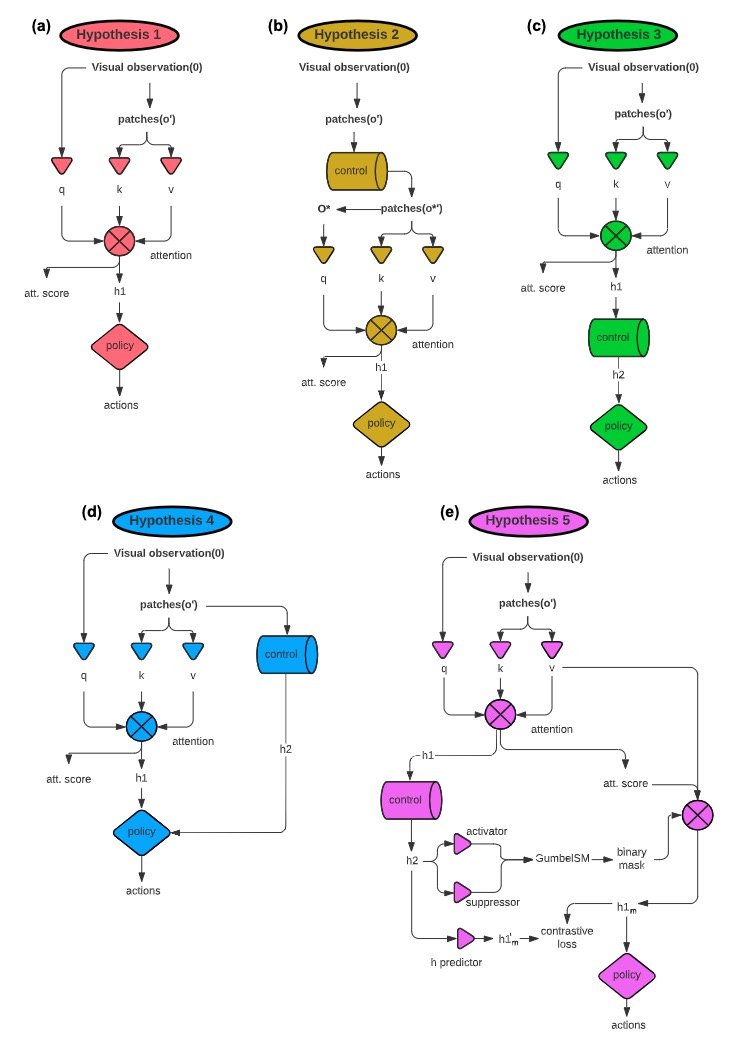[Preprint] Attention Schema in Neural Agents
Abstract
Attention has become a common ingredient in deep learning architectures. It adds a dynamical selection of information on top of the static selection of information supported by weights. In the same way, we can imagine a higher-order informational filter built on top of attention: an Attention Schema (AS), namely, a descriptive and predictive model of attention. In cognitive neuroscience, Attention Schema Theory (AST) supports this idea of distinguishing attention from AS. A strong prediction of this theory is that an agent can use its own AS to also infer the states of other agents’ attention and consequently enhance coordination with other agents. As such, multi-agent reinforcement learning would be an ideal setting to experimentally test the validity of AST. We explore different ways in which attention and AS interact with each other. Our preliminary results indicate that agents that implement the AS as a recurrent internal control achieve the best performance. In general, these exploratory experiments suggest that equipping artificial agents with a model of attention can enhance their social intelligence.


Leave a Reply